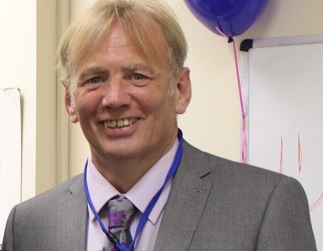Charity chief Gilbert Grieve on making health care services local
As Scottish health priorities shift away from acute service in hospitals towards preventative community services, the third sector is expected to play a bigger role in supporting the health of our nation.
However, while the voluntary sector provides a wide range of community health services from befriending to healthy eating groups, many organisations aren’t aware that the creation of new integrated health and social care boards may mean more opportunities for them and their projects.
In East Dunbartonshire we want to make sure that our local services are able to take advantage of opportunities in health, and that’s why East Dunbartonshire Voluntary Action decided to partner with the Scottish Council for Voluntary Organisations (SCVO) in the Building Healthier and Happier Communities (BHHC) programme.
The programme has seen us working with local organisations to help build their capacity and prove their ability to provide high-quality social and care services that are run by local people and delivered in the community.
Many organisations aren’t aware that the creation of new integrated health and social care boards may mean more opportunities for them and their projects
We’ve held events all over East Dunbartonshire to ensure awareness and engagement in the project. We’ve been providing support and training in issues such as project design for organisations looking to develop new ideas, how to create logic models to capture the impact and effectiveness of services, and practical hints on fundraising to ensure that projects can be robust and sustainable.
Right from the start public sector partners from health and social work have also been involved, ensuring the sector’s profile is raised among these groups as well.
The Youth on Bikes Scheme is an excellent example of a project that is addressing local need and tackling social isolation. The scheme works with the East Dunbartonshire Bike Coop to recruit young volunteers to get on their bikes and visit older people in their homes to provide shopping or social contact. It builds on the work of the local intergenerational partnership, which has been working to break down barriers between these two groups, whilst at the same time providing worthwhile services. The project also builds on the policy work of the local Bike Coop, which aims to encourage healthier lifestyles.
Organisations being supported through BHHC have told us that they already feel the benefit of the programme, including the opportunity to raise their profile. They have also welcomed working with other local health groups. The project as a whole has shown what a relatively small amount of funding can do when focused on engaging the local third sector in a meaningful way.
Within East Dunbartonshire we are looking to ensure that the benefits of the project continue and are working on sustainability plans with all the projects and SCVO. SCVO is also looking to replicate the project in other parts of the country.
Gilbert Grieve is chief executive of East Dunbartonshire Voluntary Action.
BHHC is hosting two debates on the role of the third sector in reducing health inequalities at the Gathering at 9.30am on both Wednesday 25 and Thursday 26 February.
To find out more about BHHC and the impact it’s had on local third sector organisations head along to the Shared Learning Event on 10 March in Bishopbriggs.







